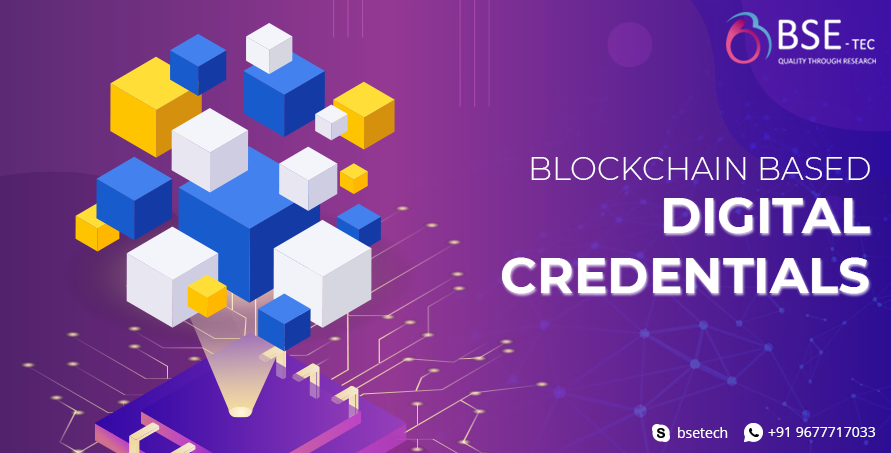Blockchain-based Digital Credentials

Blockchain-based digital credentials, also known as blockchain credentials or digital certificates, are a form of digital representation of a person’s achievements, qualifications, or skills.

These credentials are stored securely on a blockchain, providing a tamper-proof and verifiable way to prove one’s qualifications or accomplishments.
Anchoring Data to Blockchain
Anchoring data to a blockchain involves attaching a cryptographic hash of external data to the blockchain, creating a permanent and immutable record. This process is often used to prove the existence or integrity of data at a specific point in time without storing the entire data on the blockchain itself. By anchoring data to the blockchain, users can establish a trusted and verifiable link between the external data and the blockchain’s decentralized and tamper-proof nature.
Steps Involved In Issuing And Verifying Credentials On Blockchain

The steps involved in issuing and verifying blockchain-based digital credentials are as follows:
1. Issuer Setup:
The issuer is an entity that issues digital credentials. This could be an educational institution, a professional organization, or any authority responsible for certifying achievements or qualifications. The issuer sets up an account on a blockchain platform that supports digital credential issuance, such as Ethereum or Hyperledger Fabric. The issuer invites the recipient to receive the blockchain credentials.
2. Credential Template Creation:
The issuer creates a credential template that defines the information to be included in the digital credential. This template includes details such as the recipient’s name, the title of the credential, the issuing date, and other relevant information. The receiver accepts the invitation.
3. Credential Issuance:
Once the credential template is ready, the issuer fills in the specific details for each recipient and issues the digital credentials to them. The issuer digitally signs the credential using their private key, ensuring the authenticity and integrity of the issued credentials. The issuer hashes the credentials on the blockchain.
4. Credential Storage on the Blockchain:
The issuer sends the blockchain credentials to the receiver. The issued digital credentials are stored on the blockchain. Each credential is represented by a unique digital token or smart contract.
5. Recipient’s Wallet:
The recipient of the digital credential must have a digital wallet capable of storing and managing blockchain-based credentials. This wallet contains the recipient’s public and private keys, which they use to manage and share their digital credentials securely. The recipient sends the credentials to the employer (for the verification process).
6. Credential Verification:
The verifier checks the authenticity of the credentials. To verify the authenticity and validity of a digital credential, the recipient can present the credential to any party that requires verification, such as an employer or an educational institution. The Verifier can retrieve the credential’s data from the blockchain using the unique identifier or smart contract associated with the credential.
7. Verification Process:
The verifier validates the digital signature of the issuer using the issuer’s public key, ensuring that the credential has not been tampered with since issuance. The verifier checks the blockchain to confirm that the digital credential is registered and issued by the legitimate issuer. The verifier can also check if the recipient’s public key matches the one associated with the credential, ensuring that the recipient is the rightful owner of the credential.
8. Trust and Transparency:
The decentralized and immutable nature of the blockchain ensures trust and transparency in the verification process. Since the credentials are stored on the blockchain, they cannot be forged or altered, providing a reliable source of truth.
Blockchain-based digital credentials offer several advantages, including portability, security, and ease of verification. They streamline the process of verifying qualifications and achievements, reducing reliance on traditional paper-based certificates and enhancing the overall credibility of the credentials.
Looking for a secure and tamper-proof way to store and verify credentials? Get in touch with the blockchain development firm to create blockchain-based digital credentials that are safe and secure. Contact BSEtec for more details.




